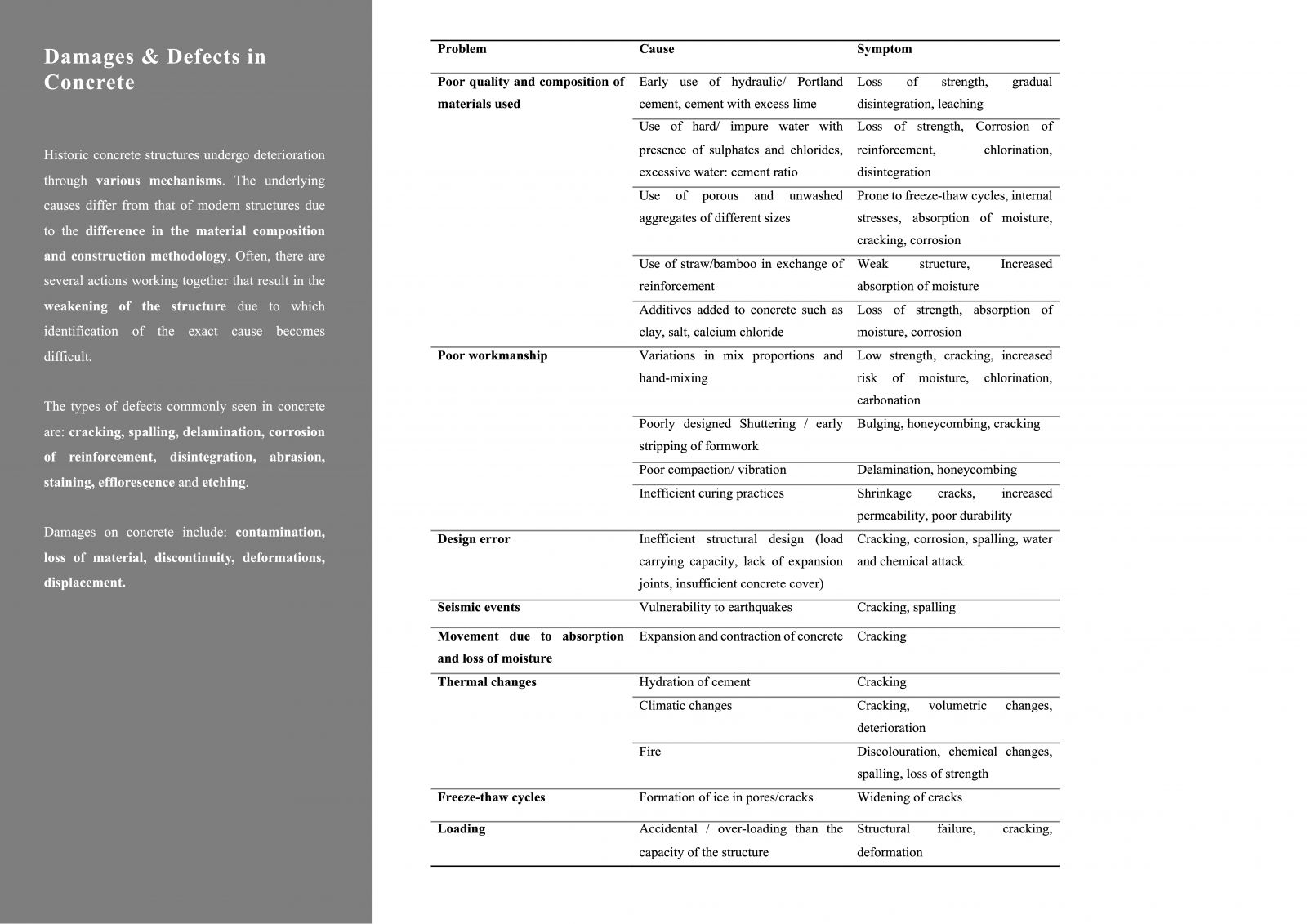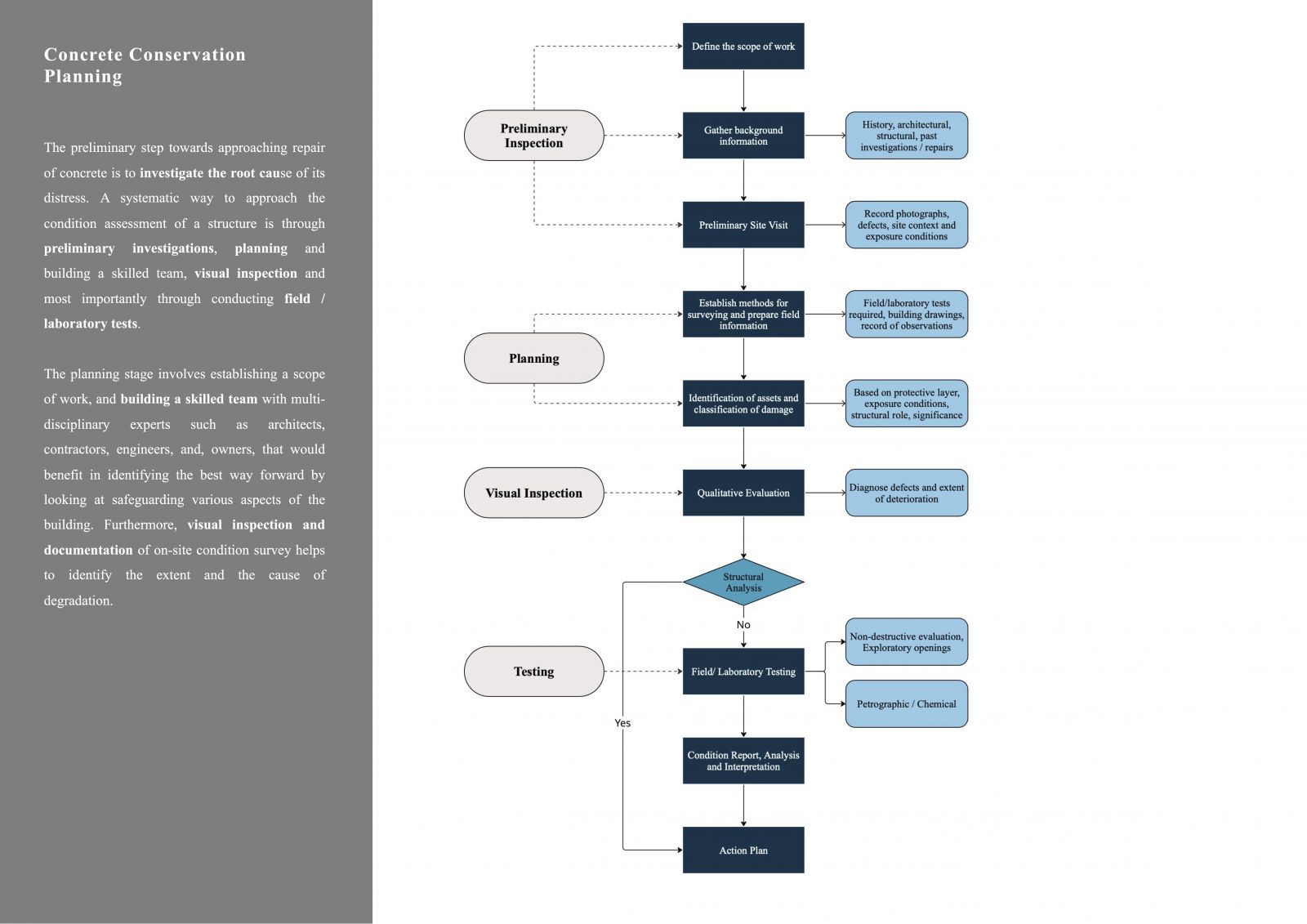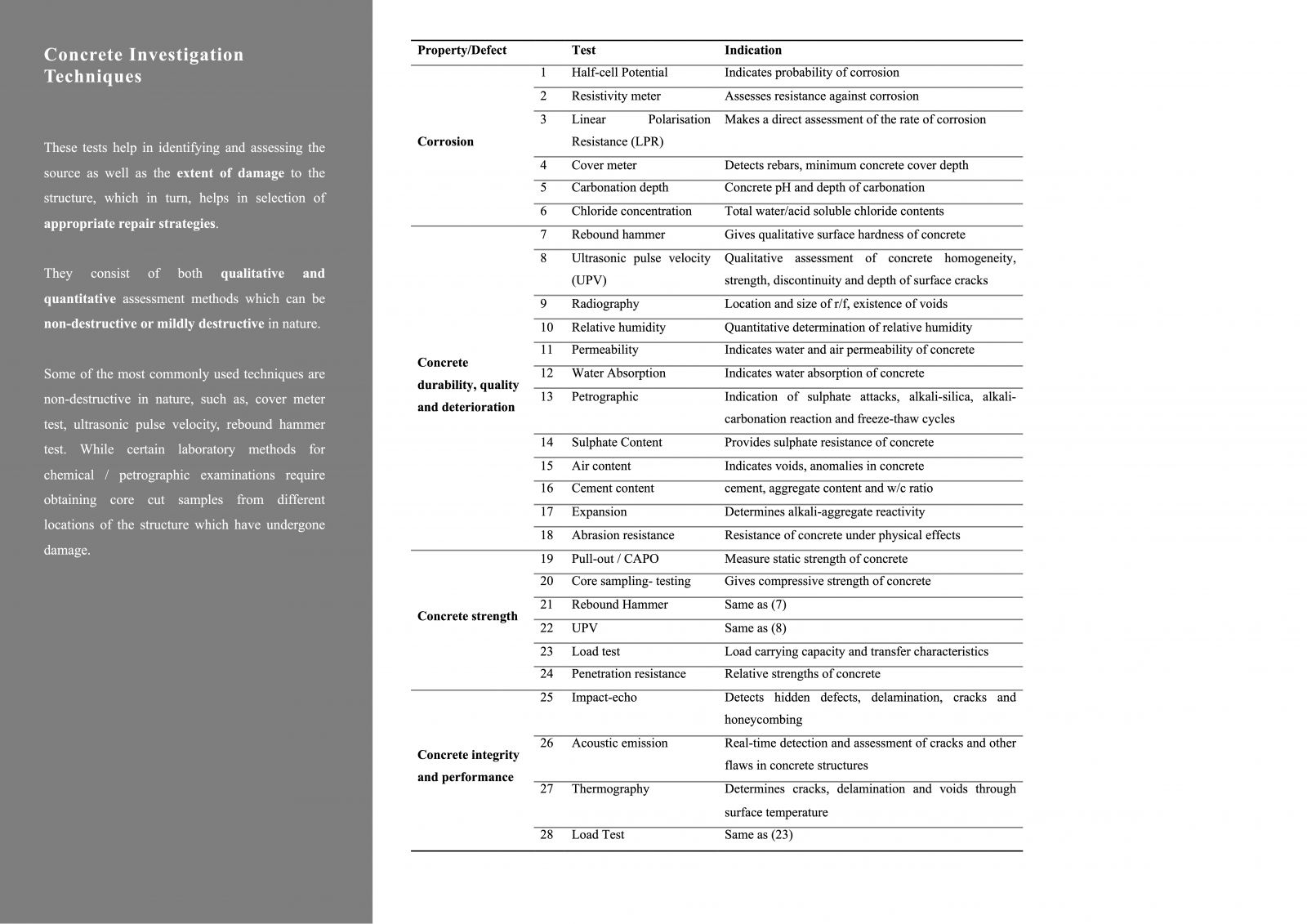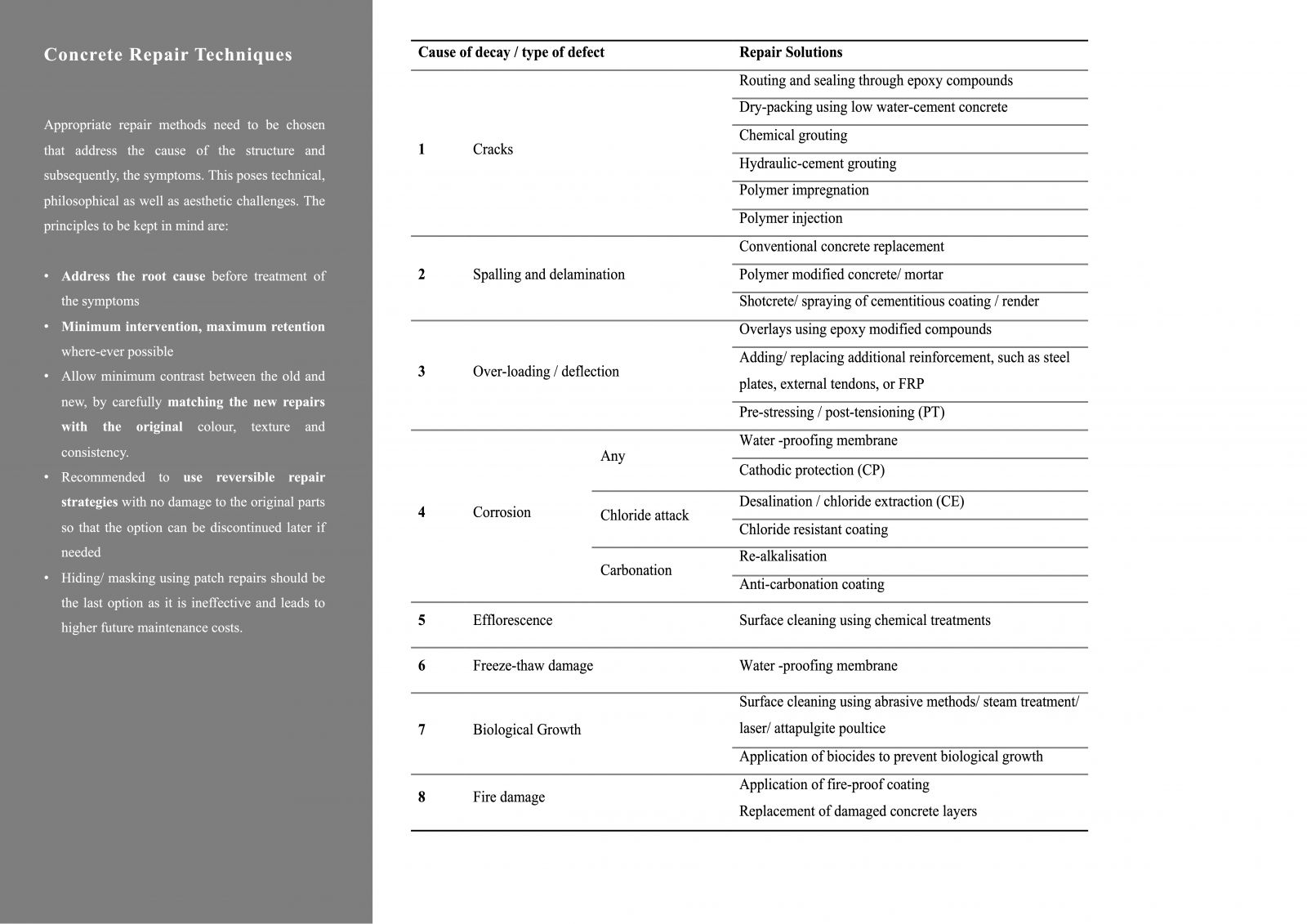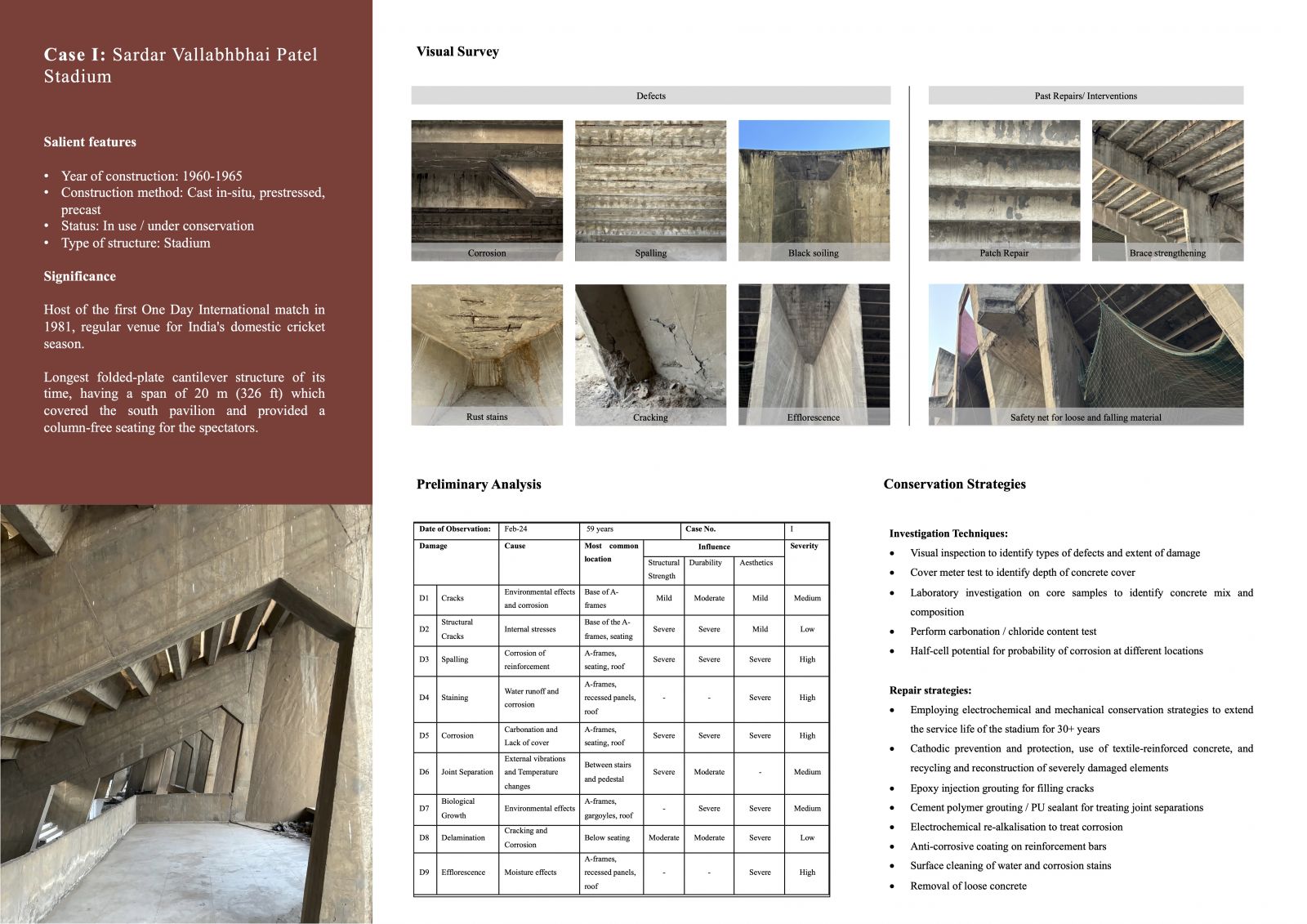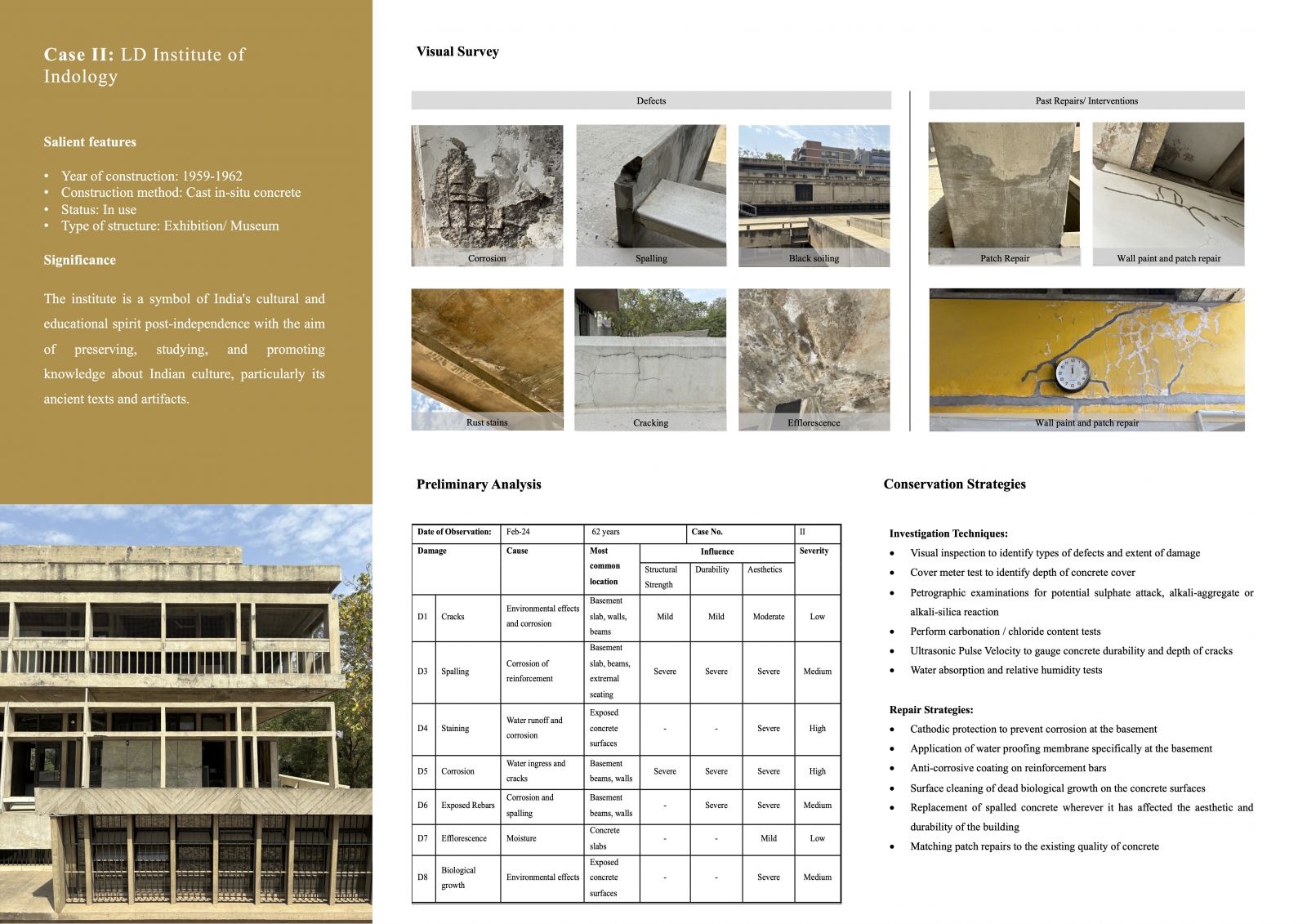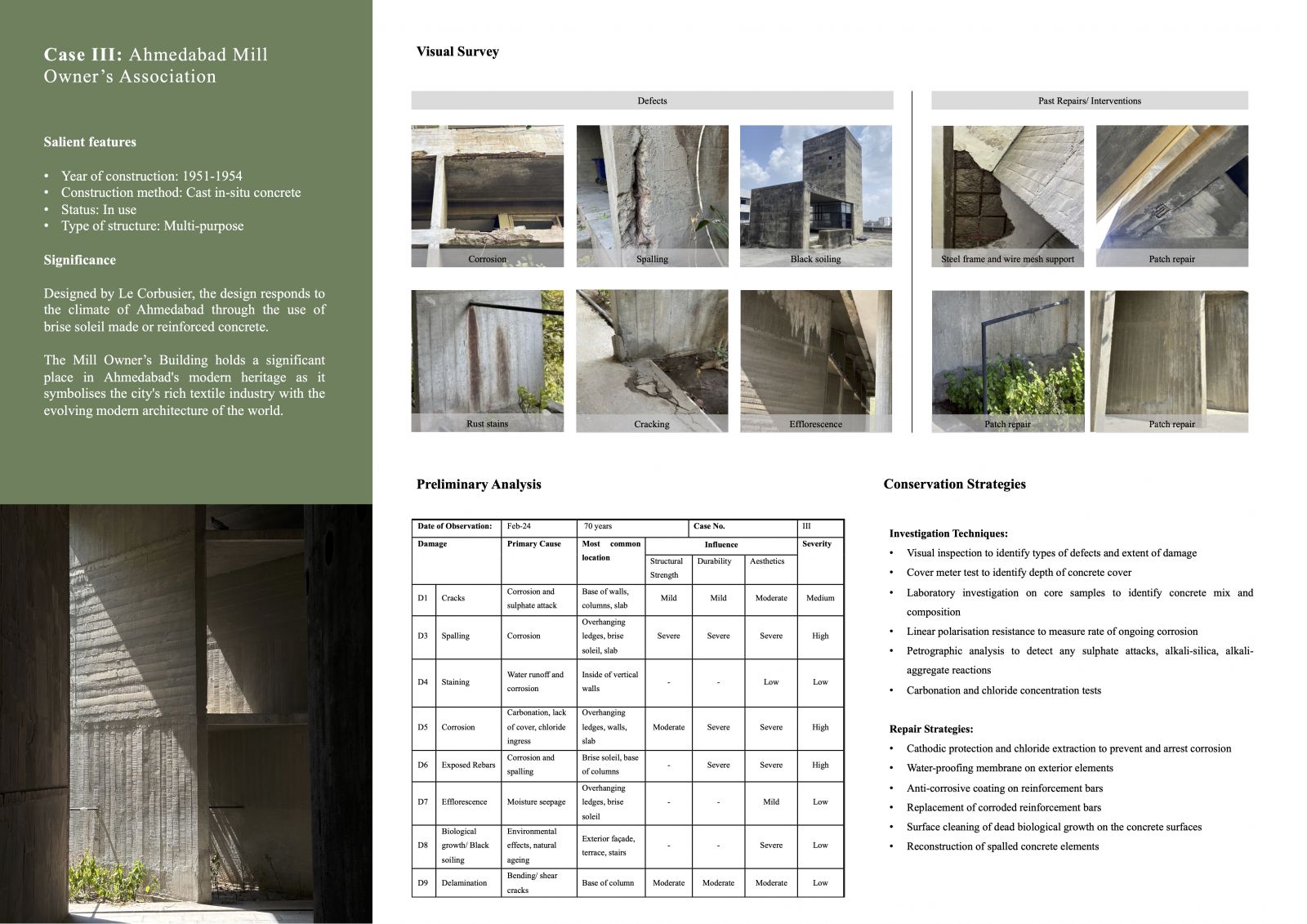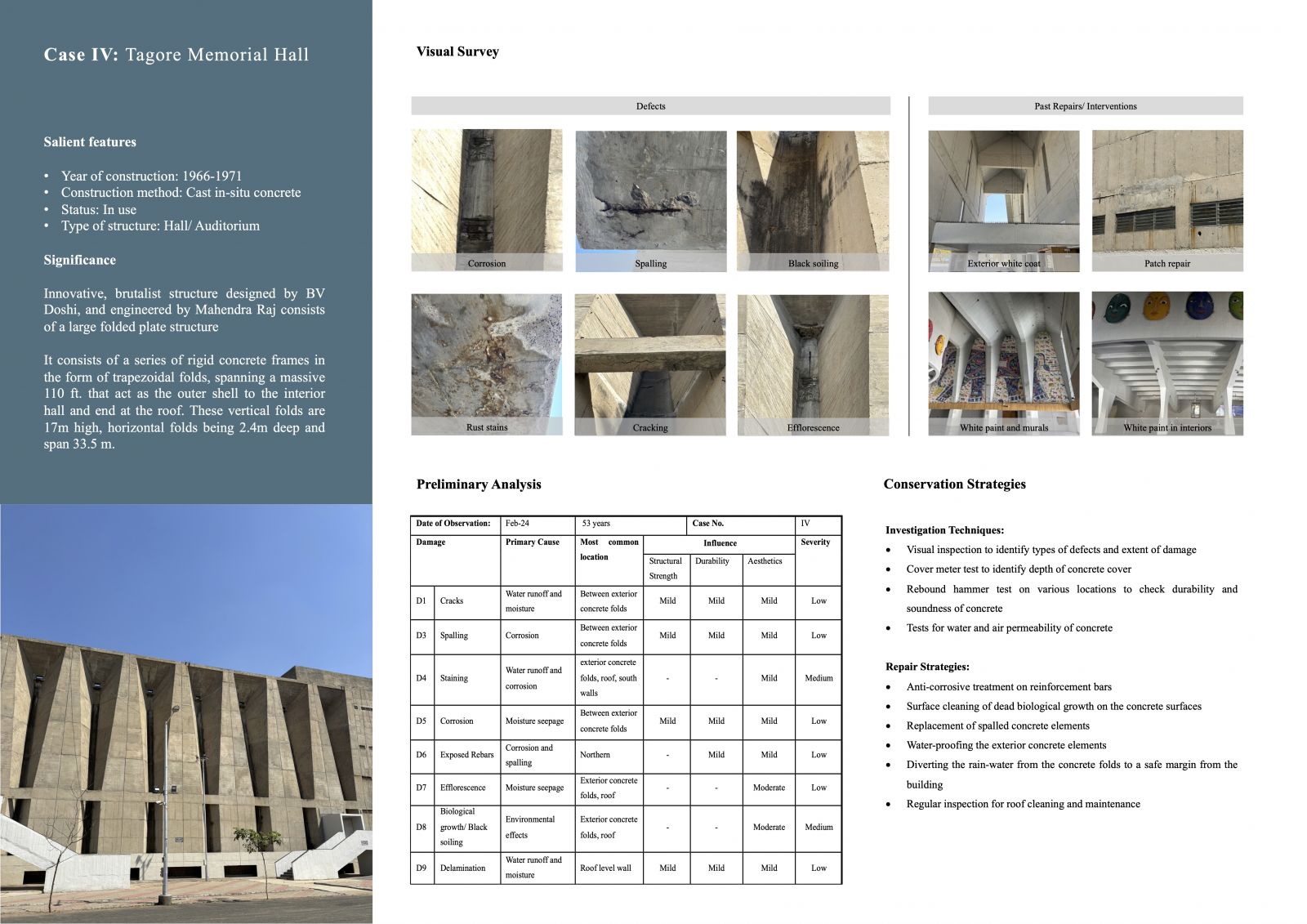Your browser is out-of-date!
For a richer surfing experience on our website, please update your browser. Update my browser now!
For a richer surfing experience on our website, please update your browser. Update my browser now!
Preservation of the twentieth century heritage is fundamental for maintaining a tangible link to the rich cultural heritage of the post-independent India. This period was characterised by the extensive use of concrete to shape the nation’s modernist and progressive ideals. However, the lack of recognition towards ‘modern heritage’ and limited knowledge about concrete technology has put these structures at the risk of severe damage. There are ethical as well as technical challenges that need to be dealt with when conserving the built heritage of this era. This research delves into the adaptability of concrete, examining the impact of environmental factors and various deterioration mechanisms. It is based on a systematic literature review of the best conservation practices around the globe, and explores the various investigation and repair techniques for addressing concrete damages and defects. The research aims to highlights the most recurrent defects in historic concrete such as corrosion, spalling and other moisture related processes through four case studies, located in Ahmedabad, India, based on an observational and a qualitative approach and proposes effective conservation strategies for the same. It concludes by recognising the manifold risks faced by these structures and the urgent need for its conservation and management.
View Additional Work
